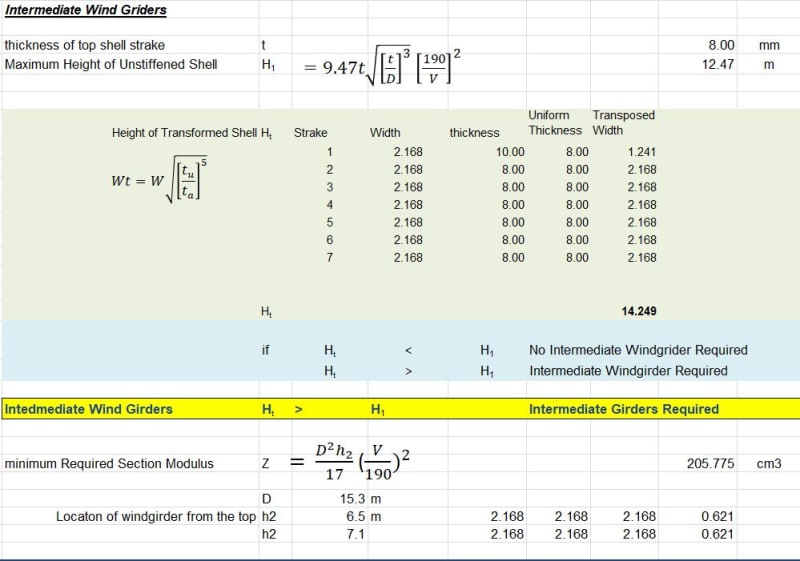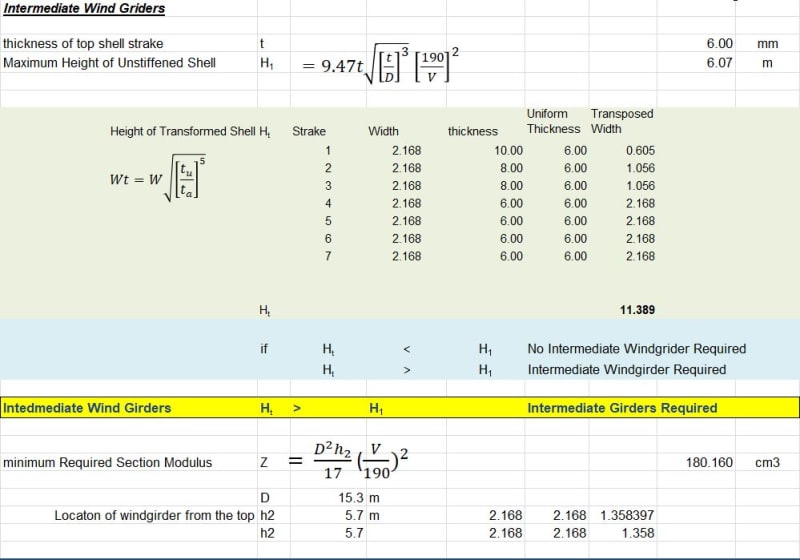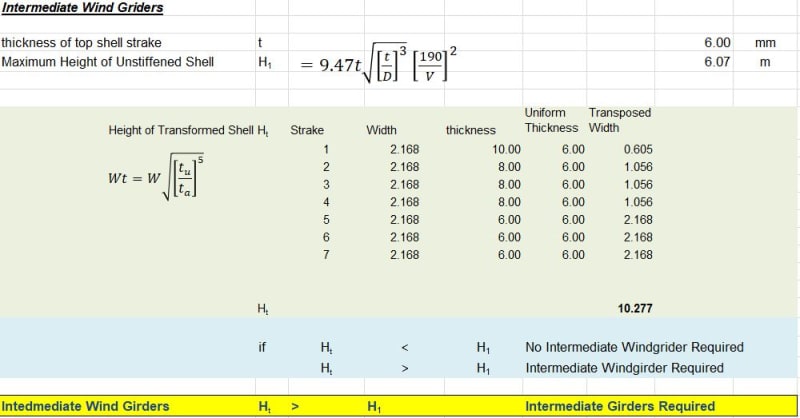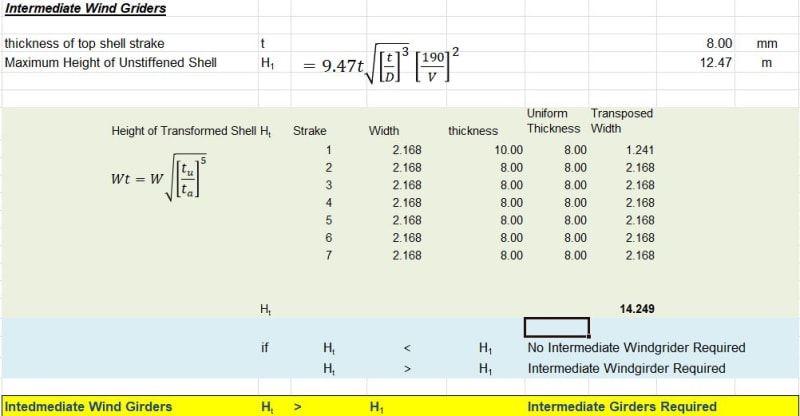Dear Experts,
I am in the process of designing 15m diameter x 15m high tank. Calculated thickness for the top course is 2.7mm & the minimum requirement as per API650 is 6mm. However the construction team requested it to be 8mm so I have considered 8mm thick top course. Now the question is when calculating the maximum length of unstiffened shell and Transformed shell height for the design of intermediate wind girder which thickness I should use ie 6mm or 8mm?
Thanks in advance
Magesh
I am in the process of designing 15m diameter x 15m high tank. Calculated thickness for the top course is 2.7mm & the minimum requirement as per API650 is 6mm. However the construction team requested it to be 8mm so I have considered 8mm thick top course. Now the question is when calculating the maximum length of unstiffened shell and Transformed shell height for the design of intermediate wind girder which thickness I should use ie 6mm or 8mm?
Thanks in advance
Magesh





